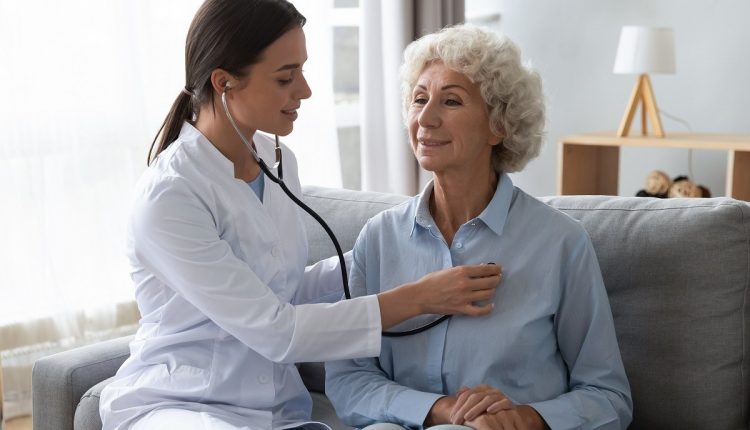
First aid: identify the 8 common symptoms of a heart attack in women
The hearts of men and women: heart attack occurs most often due to coronary artery disease. It is a serious life-threatening emergency caused by an interruption of blood flow to the heart muscle
In fact, heart failure is the leading cause of death for women in many Western countries
Symptoms can vary from person to person: some people have mild pain while others have intense pain.
Women tend to show different symptoms than men and have additional risk factors.
Therefore, knowing the specific symptoms of women could help a person seek medical attention sooner, which could save their life.
Heart attack symptoms in women
Discover the 8 most common heart attack symptoms in women
-
Chest pain
The most common symptom of heart attack in women is chest pain, either left or centre, which lasts for more than a few minutes.
Sometimes, it goes away and returns.
Chest pain may be perceived as uncomfortable chest pressure, tightness, fullness or discomfort.
-
Weakness
Feeling weak is a common symptom of a heart attack in women.
Weakness or trembling may be accompanied by anxiety, emotional distress, dizziness, fainting and feeling light-headed.
-
Sweating
Cold sweating for no apparent reason could be a sign of a heart attack.
If you experience sweating, along with other symptoms, you should call the Emergency Number for emergency medical assistance.
-
Sleep disturbances
Most women report sleep disturbances in the weeks before an attack.
These disorders may include difficulty falling asleep, unusual awakenings during the night and feeling tired despite getting enough sleep.
-
Extreme or unusual fatigue
Sudden extreme fatigue after doing a physical activity that you had no trouble doing in the past, such as walking, climbing stairs or carrying things, could be a symptom of a heart attack.
-
Lack of breathing
Heavy breathing without effort or shortness of breath, especially when accompanied by fatigue or chest pain, can cause heart problems.
Other women may experience shortness of breath when lying down, with the symptom subsiding when sitting upright.
Shortness of breath is often accompanied by chest discomfort, but shortness of breath may occur even before chest discomfort.
-
Pain in the upper body
Pain in the upper body is usually non-specific and cannot be attributed to a particular muscle or joint in the upper body.
Areas that may be affected include the arm, neck, jaw or upper back.
Body pain may start in one area and gradually spread to other parts.
-
Stomach problems
Some women may experience pain or pressure in the stomach before a heart attack occurs.
Other digestive problems associated with a possible heart attack include indigestion, nausea, vomiting.
What are the risk factors for heart attack?
Various medical conditions, health status, age, family history and lifestyle choices can increase the risk of heart disease.
About half of all women in Western countries have at least one of three risk factors for heart disease, including hypertension, high cholesterol and smoking.
When to see a doctor?
Since age is one of the risks for cardiovascular disease, all women over 40 should have regular check-ups with their doctor to treat certain medical problems related to blood sugar, hypertension and cholesterol levels.
Early intervention reduces the chances of cardiac emergencies.
Furthermore, if you notice any of the above symptoms, you should consult a doctor to obtain treatment and reduce the amount of damage to the heart muscle.
Health professionals can perform tests to determine whether a heart attack is occurring and decide on the best treatment.
Cardiac emergencies require cardiopulmonary resuscitation (CPR) or an automatic external defibrillator to restore normal heart rhythm.
Read Also
Emergency Live Even More…Live: Download The New Free App Of Your Newspaper For IOS And Android
How To Use An AED On A Child And An Infant: The Paediatric Defibrillator
Aortic Valve Surgery: An Overview
Aorta Surgery: What It Is, When It Is Essential
Abdominal Aortic Aneurysm: Symptoms, Evaluation And Treatment
Coronary Artery Bypass Surgery: What It Is And When To Use It
Do You Have To Face Surgery? Post-Surgery Complications
What Is Aortic Regurgitation? An Overview
Diseases Of The Valves Of The Heart: Aortic Stenosis
Interventricular Septal Defect: What It Is, Causes, Symptoms, Diagnosis, And Treatment
Heart Disease: The Atrial Septal Defect
Interventricular Defect: Classification, Symptoms, Diagnosis And Treatment
Arrhythmias: The Alterations Of The Heart
Identifying Tachycardias: What It Is, What It Causes And How To Intervene On A Tachycardia
Cardiac Rhythm Disturbance Emergencies: The Experience Of US Rescuers
Cardiomyopathies: Definition, Causes, Symptoms, Diagnosis And Treatment
Spontaneous Coronary Artery Dissection, Which Heart Disease Is Associated With



